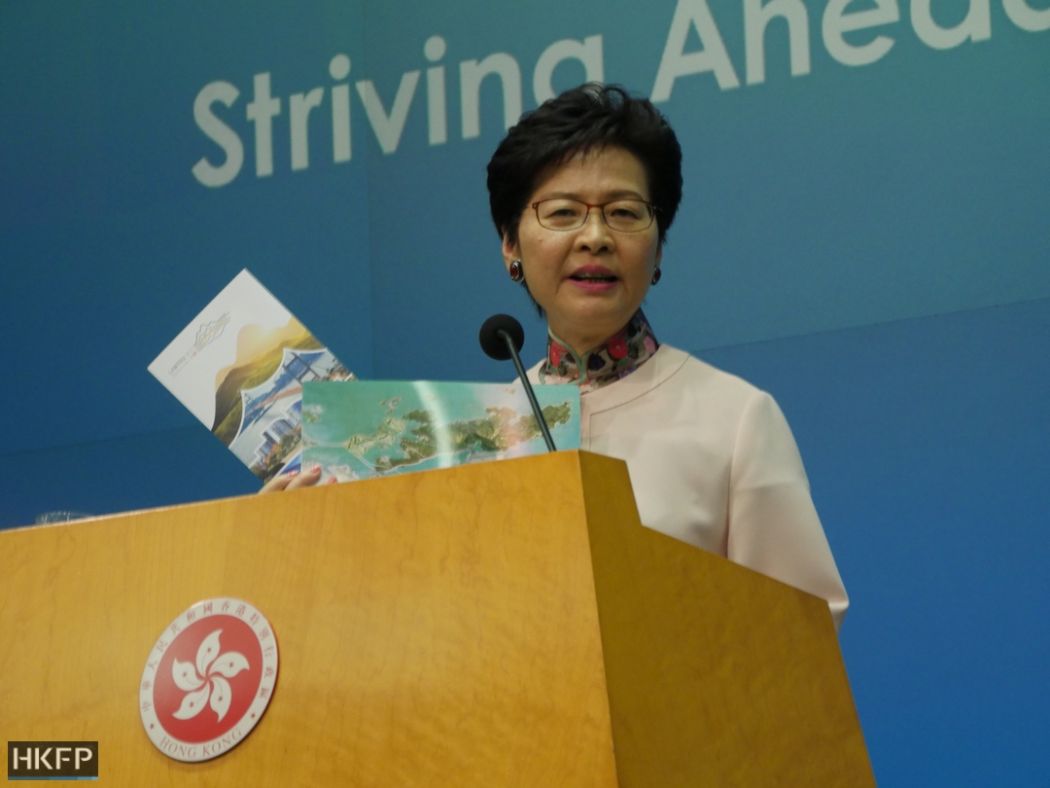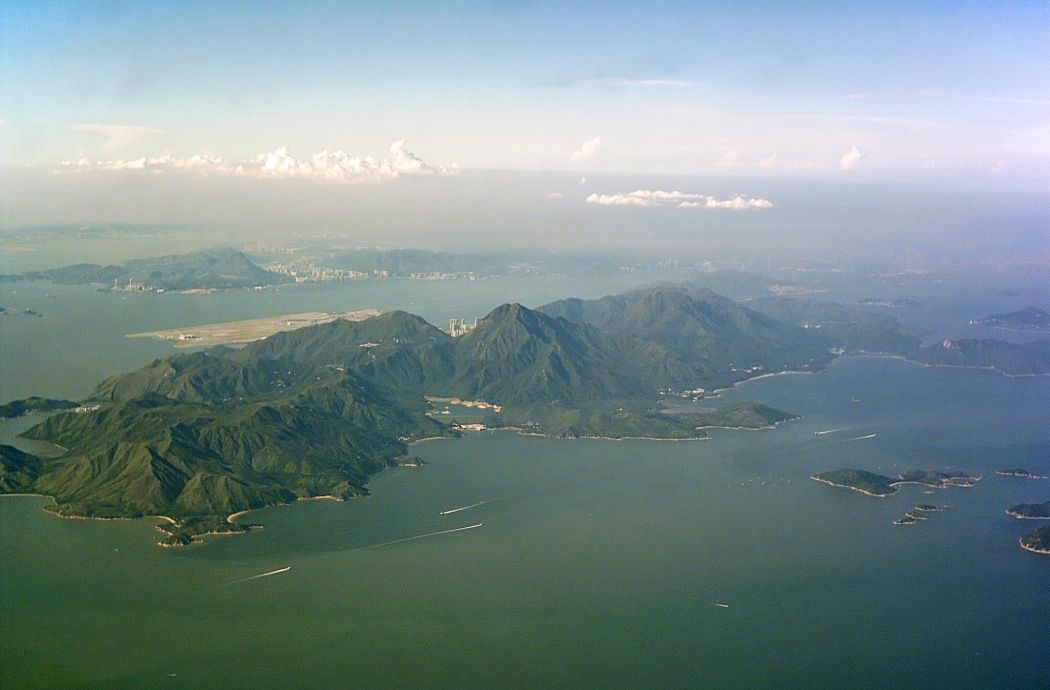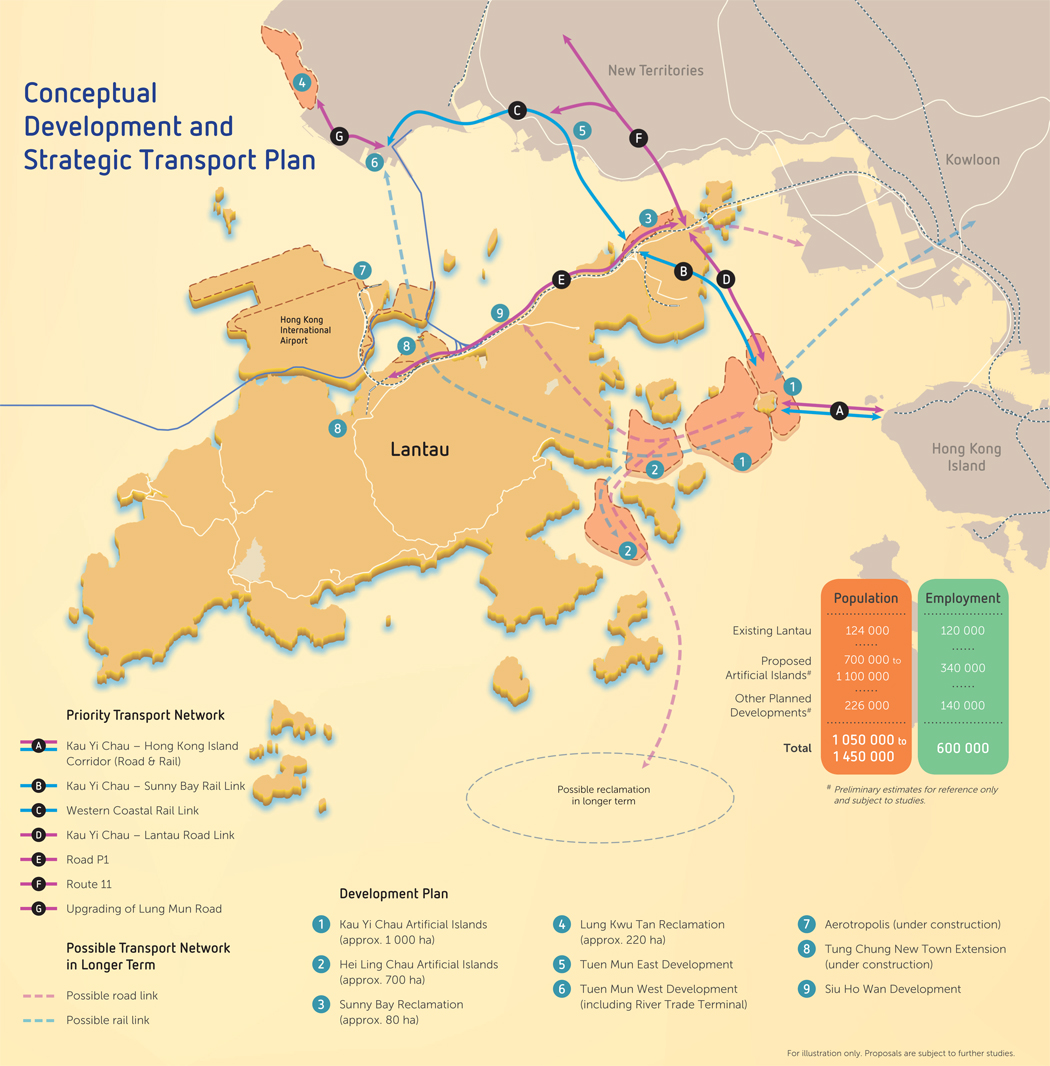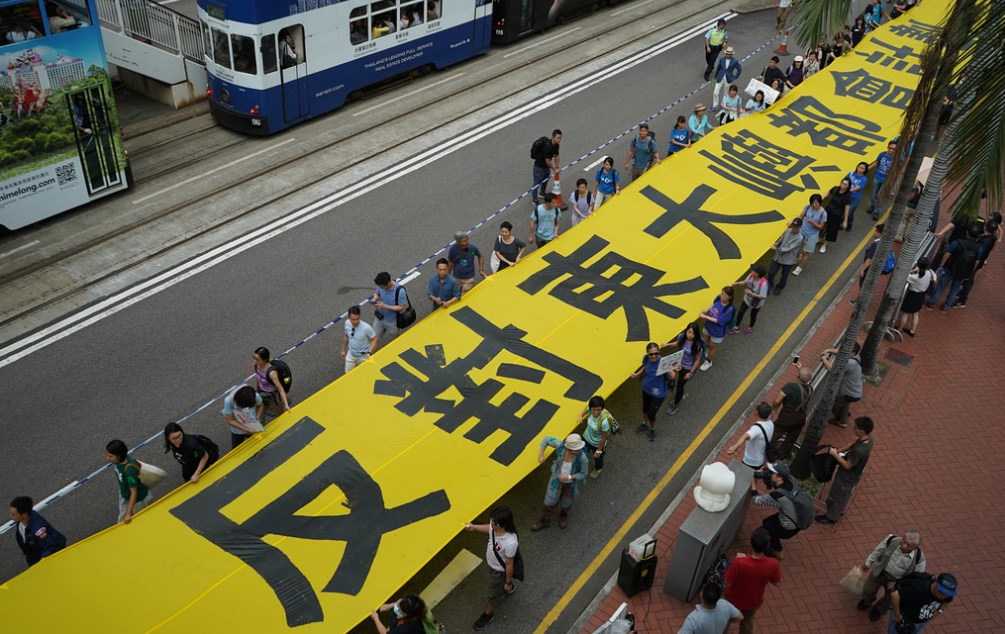Hong Kongers are being told a fairy tale about an imaginary land called Lantau Tomorrow Vision that will magically resolve our housing problems and transform the economy to boot.
The handsome prince: the government. The princess in distress: people waiting for public housing and affordable private homes. The enchanted setting: 1,000 hectares reclaimed from the sea, with spacious housing and a core business district providing jobs, built at a cost upwards of HK$1 trillion. The villains: critics who say the tale is fatally flawed.

Despite its forward-sounding name, Lantau Tomorrow, like all fairy tales, is set in the past. Once upon a time, 1980 to be precise, when the government was planning the infrastructure to support the new airport in north Lantau, it considered two options. In one, the new airport would be connected to Tsing Yi and the rest of Hong Kong via a bridge, with a new town in Tung Chung.
In the other, the new airport would be linked to Hong Kong via a new town called East Lantau Island, with a tunnel connecting it to Kennedy Town. The island was to be formed by reclaiming 1,000 hectares from the sea around Kar Yee Chau, and would have a population of 300,000 to 700,000 who would mostly work on the island.
Eventually, the first option prevailed, resulting in Tung Chung new town and Tsing Ma Bridge connecting Lantau to the rest of Hong Kong. The second option has become Lantau Tomorrow Vision, which copies almost verbatim the 1980 East Lantau Island study’s geographical location, reclaimed land area, population size and job creation.
So, like a fairy tale, Lantau Tomorrow Vision is frozen in time: Hong Kong in the 1980s. The population, five million in 1981, was forecast to grow by 40 per cent to seven million by 2011. Manufacturing employed 18% of the workforce and generated 20% of GDP. New towns, such as Tsuen Wan and Kwai Chung, were planned around the idea that residents could live near the factories where they worked.

But in the real world, times change. Since the 1980s, Hong Kong’s economy has evolved from manufacturing to services and land is not as essential for economic development. Last year, only 1.1 per cent of GDP came from manufacturing, which employs 1.8 per cent of workers.
The internet is making obsolete the concentration of economic activity in a core business district. Hong Kong’s population will increase only 10 per cent in the next 30 years, from 7.4 million now to a peak of 8.2 million in 2043, then decline to 7.8 million in 2066. And we now know that rising sea levels from global warming threaten coastal communities, never mind an artificial mid-sea island with 700,000 residents.
Lantau Tomorrow is a 40-year-old “vision.” Again like a fairy tale, it’s an idealised story embellished with fantastical notions of more living space and slogans like smart city, green city, intelligent hub. But real-world scrutiny reveals that it’s mostly make-believe, rife with internal contradictions.

Firstly, its 12-year schedule means it cannot address the current housing problem. Construction is to start in 2025, with initial housing ready in 2032. That’s assuming there will be none of the delays that have afflicted every major infrastructure project in recent years.
Secondly, the government trumpets that 70 per cent of Lantau Tomorrow’s homes, up to 180,000 units, will be public housing. But this proportion of public housing contradicts the other government boast of a shiny new business core offering many jobs so that residents can both live and work there.
Given the profile of a public housing population, how many are likely to find jobs in an upscale business district? The majority will end up commuting away for work. In Tin Shui Wai and Tuen Mun, which have a high proportion of public housing, 75 per cent and 50 per cent of the workers respectively have jobs outside their districts.
Thirdly, a population of up to 700,000 on 1,000 hectares–copied from the 1980 East Lantau Island study–negates the claim that Lantau Tomorrow will offer ample space and better quality of life. Its population density of 70,000 per square kilometre will be worse than Kwun Tong, the most congested district in Hong Kong at 56,000 people per sq km.
And affordable private homes? Based on figures given by Development Secretary Michael Wong, an 800 square foot flat would cost HK$15 million.

Fourth, copying the transportation network from the 1980 study, when the population and traffic intensity was vastly different, will lead to serious congestion (for instance, only one tunnel from Lantau Tomorrow to Hong Kong Island is planned). This was confirmed in a 2016 government study only released this month (May) after multiple requests.
Government officials now disavow their own findings, alleging the report “is now outdated, obsolete, relating to incomplete analysis or research not applicable as of today”. To maintain the fairy tale, they deny a reality that they acknowledged privately.
There are many more government claims that don’t stand up to scrutiny. Suffice to say that the most realistic scenario is likely to be an initial 300-hectare reclamation on the east side of Kar Yee Chau from where the planned tunnel will connect to Kennedy Town. Lantau Tomorrow will be primarily public housing plus some unaffordable private housing.
This will not attract financial services, technology companies or other drivers of the economy to locate there. Most of the residents will be commuting to work elsewhere on congested roads and the tunnel. For this fairy tale, there’s no happy ending.
Hong Kong’s psychedelic disco rock superstars Shumking Mansion will play this year’s Hong Kong Free Press 2019 fundraising party at the Hive Spring in Wong Chuk Hang. Tickets are available now for a minimum donation of just HK$50 in advance (free for HKFP monthly donors).

